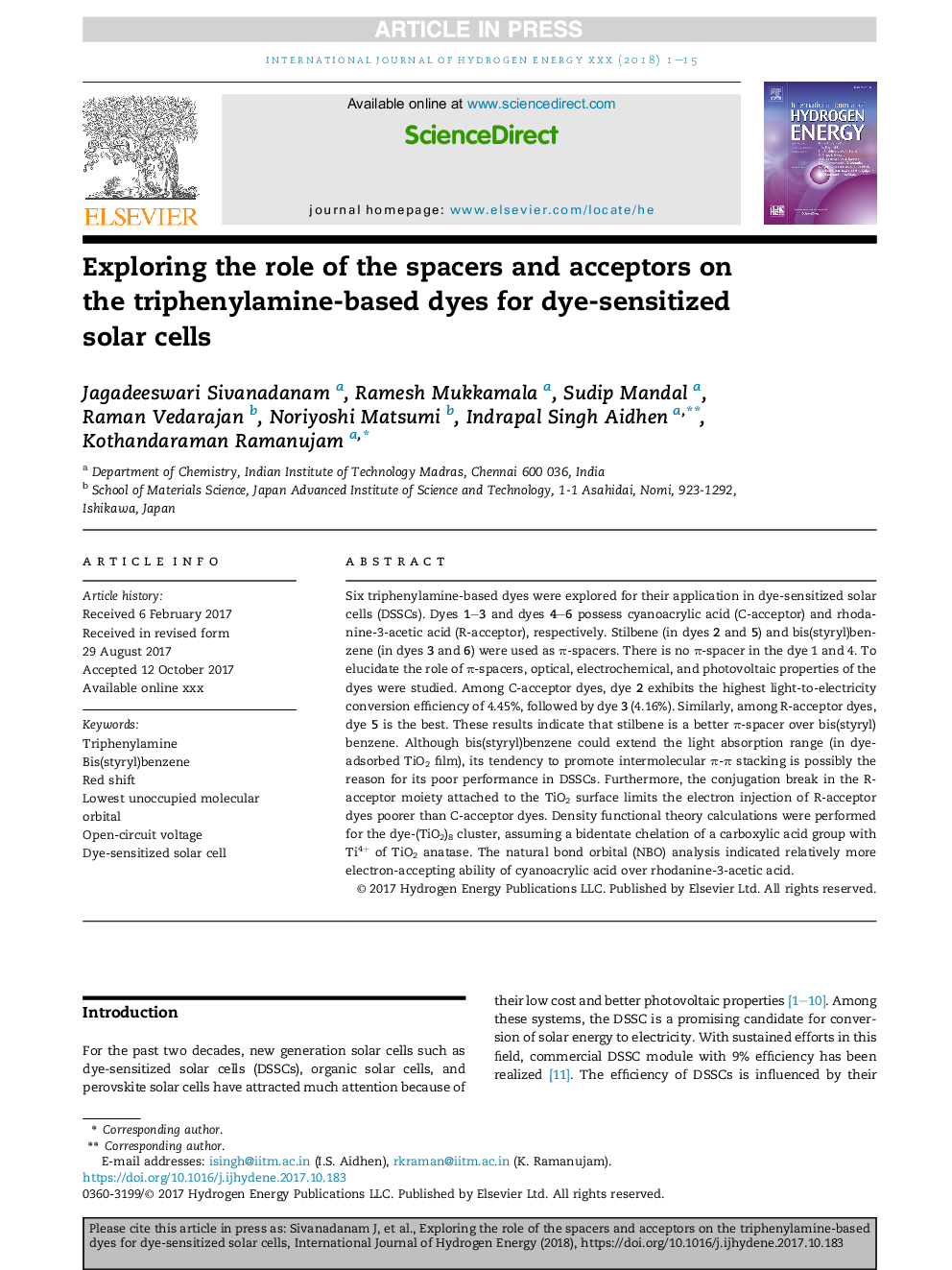| Article ID | Journal | Published Year | Pages | File Type |
|---|---|---|---|---|
| 7707446 | International Journal of Hydrogen Energy | 2018 | 15 Pages |
Abstract
Six triphenylamine-based dyes were explored for their application in dye-sensitized solar cells (DSSCs). Dyes 1-3 and dyes 4-6 possess cyanoacrylic acid (C-acceptor) and rhodanine-3-acetic acid (R-acceptor), respectively. Stilbene (in dyes 2 and 5) and bis(styryl)benzene (in dyes 3 and 6) were used as Ï-spacers. There is no Ï-spacer in the dye 1 and 4. To elucidate the role of Ï-spacers, optical, electrochemical, and photovoltaic properties of the dyes were studied. Among C-acceptor dyes, dye 2 exhibits the highest light-to-electricity conversion efficiency of 4.45%, followed by dye 3 (4.16%). Similarly, among R-acceptor dyes, dye 5 is the best. These results indicate that stilbene is a better Ï-spacer over bis(styryl)benzene. Although bis(styryl)benzene could extend the light absorption range (in dye-adsorbed TiO2 film), its tendency to promote intermolecular Ï-Ï stacking is possibly the reason for its poor performance in DSSCs. Furthermore, the conjugation break in the R-acceptor moiety attached to the TiO2 surface limits the electron injection of R-acceptor dyes poorer than C-acceptor dyes. Density functional theory calculations were performed for the dye-(TiO2)8 cluster, assuming a bidentate chelation of a carboxylic acid group with Ti4+ of TiO2 anatase. The natural bond orbital (NBO) analysis indicated relatively more electron-accepting ability of cyanoacrylic acid over rhodanine-3-acetic acid.
Keywords
Related Topics
Physical Sciences and Engineering
Chemistry
Electrochemistry
Authors
Jagadeeswari Sivanadanam, Ramesh Mukkamala, Sudip Mandal, Raman Vedarajan, Noriyoshi Matsumi, Indrapal Singh Aidhen, Kothandaraman Ramanujam,
